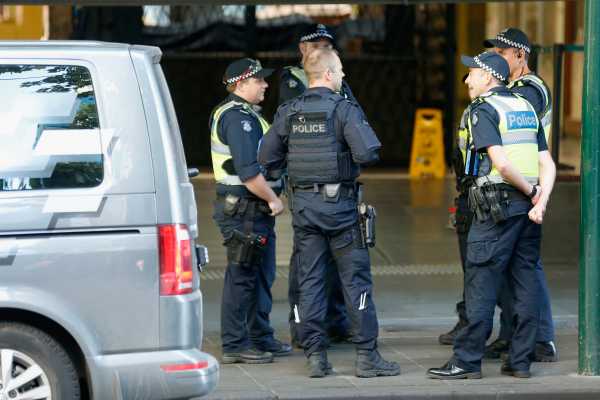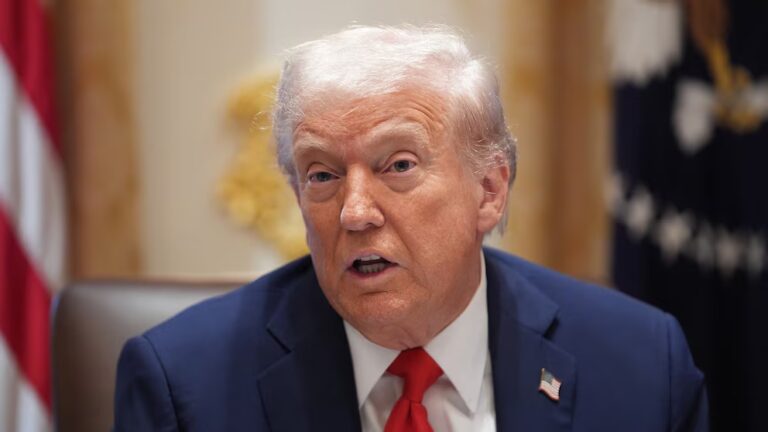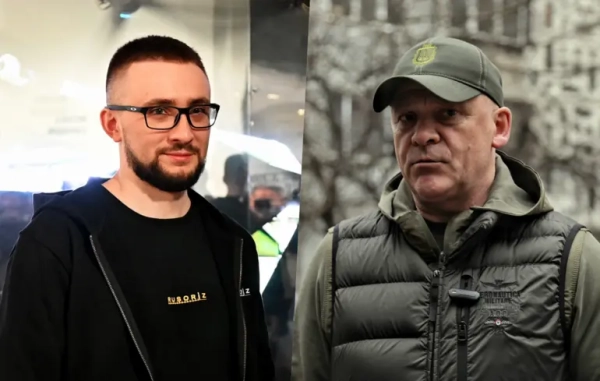
In the past week, cities on either side of the Pacific Ocean were rocked by violent attacks, 24 hours apart, in countries with vastly different gun laws. One attack saw a single life taken; the other, 12.
As America comes to grips with yet another mass shooting, this one in Thousand Oaks, California, Australia is reeling from a terrorist attack in Melbourne which saw three people stabbed, one of whom died.
On Friday afternoon, knife-wielding attacker Hassan Khalif Shire Ali parked his truck near a popular city pedestrian mall, set it alight, and then proceeded to stab passersby at random. He was quickly confronted by police who tried to subdue him, before shooting him (he died a few hours later). The Islamic State claimed credit for the attack, though there has been no independent corroboration, with police calling it a lone wolf terror attack.
Reading about both events in tandem — Australia coming together to praise “trolley man,” a bystander who attempted to intervene; and America splitting in half again over gun control — it’s hard not to be struck by a simple fact: Australia’s terrorist attack was far less deadly than it might have been.
Australia is a case study in what can happen when countries embrace gun control
US gun control advocates often point to Australia’s gun laws in the wake of mass shootings as evidence of how effective a solution it can be, partly because it provides such a stark before-and-after case study.
In 1996, a conservative Australian government enacted strict gun laws after 35 people died in the Port Arthur mass shooting, shocking the nation. The reforms restricted gun ownership, while outright banning automatic and semiautomatic rifles and shotguns. The government introduced a mandatory buyback of the newly illegal guns, peacefully purchasing and destroying about 650,000 firearms.
The reforms seemed to work, if lowering gun deaths is the aim. According to a 2011 review by Harvard researchers, Australia’s firearm homicide rate dropped by about 42 percent in the seven years after the law passed (its firearm suicide rate fell by 57 percent). As Vox’s German Lopez noted, it’s hard to know how much of that drop came from the reforms, but experts think they’re definitely linked:
And there hasn’t been a mass shooting in Australia since. “While 13 gun massacres (the killing of 4 or more people at one time) occurred in Australia in the 18 years before the [gun control law], resulting in more than one hundred deaths,” the Harvard team wrote, in the 14 following years, there were none. By that metric, the US has had four in the past month alone.
Australians are vocally proud of their gun laws, now more than ever in the wake of two attempted massacres with vastly different outcomes:
Bringing a knife to a gunfight: the gun-knife debate
Some gun rights advocates, including the president of the United States, point to attacks like Melbourne’s as evidence that deadly violence occurs whether or not guns are accessible. Immediately after London’s 2017 knife attack which took eight people’s lives, Donald Trump tweeted, “Do you notice we are not having a gun debate right now? That’s because they used knives and a truck!” But these comments miss — or choose to ignore — the fact that far fewer people are killed in attacks like these.
Shire Ali, for example, was able to stab only three people with his weapon on Friday before police arrived on the scene. Many Australians reacted by wondering how much worse it could have been if he’d had a firearm.
Guns rights advocates, however, insist that gun control doesn’t prevent violence — guns themselves do.
In a speech to the NRA in May, Trump mocked Britain and France over their recent terrorist attacks, implying each would be better off if they had more “good guys with guns” on their streets. Citing the 2015 Paris attacks that left 130 dead, Trump claimed that terrorists were able to take their time because “nobody has guns in Paris.” Trump also brought up the UK’s rising knife attacks, pointing to the fact that London now has a higher murder rate than New York as evidence that gun control hasn’t worked — a point which fails to acknowledge New York’s own strict gun laws and now historically low murder rate. Britain is also overall much safer than the US.
America’s heightened homicide rate, Vox’s Lopez points out, is likely due to the prevalence of guns.
The Melbourne attack disproves many of the popular arguments against gun control
Australia’s gun reforms may not work in the US — they are, needless to say, different countries — but the Melbourne attack is still an interesting opportunity to look at several arguments Americans use against gun control.
Some advocates argue that gun control won’t do anything because “bad people still get guns illegally.” Yet, in few of the recent incidents in Australia has the killer had access to a gun. According to a report, Shire Ali intended to kill far more people than he did; his attack has been categorized as a “low-skilled” because he wasn’t able to access firearms or explosive devices.
Then of course there’s the oft-quoted “good guy with a gun” argument — that an armed, well-intentioned person is able to stop or even deter attackers. This narrative is flawed, as German Lopez explains, in a few key ways. For one thing, “for every criminal killed in self-defense, there are dozens more murdered”—34, in fact, according to the Washington Post. For another, “even armed civilians typically can’t respond to a shooting in time,” with multiple simulations demonstrating that most people, even if armed, could not stop an active shooter.
As it was, Australia did have a good guy — a good guy with a trolley, and, per this report, good guys with a traffic cone and a chair. Those men were able to step in at lower risk to themselves (not to mention others) than if Shire Ali had possessed a gun. Fortunately, “trolley man” wasn’t actually needed — police arrived in less than 90 seconds, and were able to get in close range of the attacker because he wasn’t wielding a firearm.
Some claim that the US is simply a more violent country, but the facts simply don’t support this. As Zack Beauchamp explained for Vox, the US doesn’t have more crime than other Western nations, just more lethal violence — in part due to the prevalence of guns. In any case, Share Ali was clearly a violent individual, surely as ill-intentioned as Ian David Long in Thousand Oaks or Robert Bowers in Pittsburgh, but was able to kill far fewer people.
Imagine what the death tally could have been if Share Ali had been able to get his hands on a gun, Australians asked in response. Fortunately he wasn’t. Unfortunately, in America, there’s no need to imagine.
Sourse: vox.com






